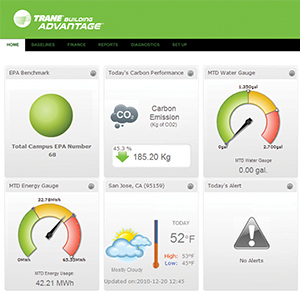Want to Reduce Utility Costs this Summer? It starts with Monitoring
July 25, 2016

(This article is part of the Roadmap 2 Summer Series. Click here to read last week’s article.)
Commercial building owners and managers are often searching for relief from the much higher utility bills that summer can bring. This is especially true in California, where average electricity prices for commercial customers last summer were 50 percent higher than the national average.[1]
The average retail price of electricity (cents per kilowatt hour) paid by commercial customers in California in July, August and September of 2015 was the third highest in the United States — behind only Hawaii and Alaska.[2] These prices are driven largely by the demand charges paid by customers in California, which are among the highest demand charges in the country.
The good news is that even simple changes can have a big impact on your utility bills this summer.
There are many ways to improve your building’s energy efficiency and save costs, and it all starts with monitoring.
Monitoring your building’s performance, energy use and other key performance indicators (KPIs) presents a significant opportunity for energy savings — and a direct impact on your bottom line. Monitoring and analyzing the data produced by your building and its systems is the key to understanding what your savings opportunities are and how you can capitalize on them.
If you’re unsure about where to start, Trane is ready to be your full-service partner in this effort — from monitoring to analysis to implementation of improvements.
What’s going on?
Monitoring gives you visibility into what’s going on in your building and how systems and equipment are performing. Visibility is the first step toward running your building more efficiently without sacrificing occupant comfort, which remains priority No. 1 for many commercial building owners and managers.
Monitoring also lets you keep an eye on critical KPIs, which may include occupant comfort, electricity demand, energy use, and building temperature and humidity ranges. One of the first steps in monitoring is to establish a baseline of building energy consumption for comparison.
Because demand charges from utility companies are typically more extreme in the summer, managing demand can provide real financial value for you in the summer — and possibly all year long. For many commercial customers in California, monthly demand charges in the summer can cost more than actual energy usage. Demand charges can sometimes make up 60 or even 70 percent of a monthly utility bill.
It is not uncommon for utility companies to bill demand on a monthly basis, based on the peak demand from the previous month. Some may also include a ratchet clause, which is an extra charge that bills for the entire year based on a building’s peak demand. Utilities measure your power draw in 15-minute intervals, and the peak demand is based on the highest 15-minute window. This means energy in the late afternoon is typically much more expensive than at midnight, for example.
Beyond greater energy efficiency and demand management, monitoring building performance can help you see potential issues before they become problems, which is important for maintaining occupant comfort. For many commercial buildings, occupant comfort is a top priority — especially in the summer — because keeping tenants happy can be critical to the bottom line.
Get the most out of your BAS
Monitoring demand — and then managing it in a way to better control costs — is done through a building automation system (BAS). With a BAS you can monitor and measure usage and demand in real time. Understanding when the demand peaks occur helps you shift building load to times of day when energy is less expensive. This is also called load shedding.
Monitoring building performance with a BAS can also help you see potential issues before they become problems, which is important for maintaining occupant comfort. For many commercial buildings, occupant comfort is a top priority all year long because keeping tenants happy can be critical to the bottom line.
Your BAS is the gateway to additional building energy management solutions from Trane. We have the tools and expertise to help you identify when and how your building is using energy. We can also help you analyze that data and turn it into meaningful information, to uncover opportunities to save costs and reduce energy consumption.
It’s important to ensure you’re maximizing the capabilities of your building controls and energy management solutions. Many building owners and managers only utilize a small portion of the features their BAS is capable of providing. With the right partner, you can take advantage of the full range of capabilities — for optimized efficiency and building and system performance.
One solution that can be especially critical for commercial customers in California is the ability to implement custom programming, which can significantly impact demand. Custom programming of your building systems helps smooth equipment and system loads to eliminate spikes, which results in driving down demand costs. For example, programming building systems to run in a staggered manner or in a sequence, to avoid having all the fans and motors running at the same time.
Monitoring important KPIs in your building is an opportunity for significant savings. Trane is a partner who not only understands how your building operates — we also have the expertise to analyze that information and then help you implement energy management solutions that drive efficiency and help lower costs.
Join us next week when we discuss preparing for power disruption, so you can keep your cool no matter the situation this summer.
Sign up to have the Roadmap 2 Summer Series sent directly to your inbox.
[1] According to data from the U.S. Energy Information Administration
[2] According to data from the U.S. Energy Information Administration
































































































